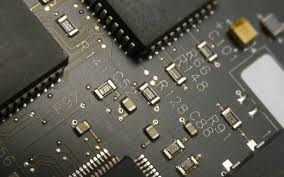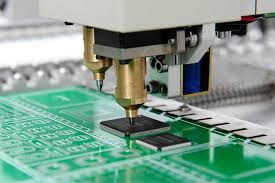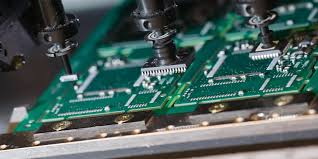Content Menu
● Understanding SMT Pick and Place Nozzles
>> Types of SMT Nozzles
● The Importance of Nozzle Size
>> 1. Component Compatibility
>> 2. Production Speed
● Enhancing Efficiency Through Design
>> 3. Error Reduction
>> 4. Cost Efficiency
● Maintenance Practices for Optimal Performance
● Innovations in Nozzle Technology
● Conclusion
● FAQ
>> 1. What factors should I consider when selecting an SMT pick and place nozzle?
>> 2. How does nozzle size affect placement accuracy?
>> 3. What maintenance practices are essential for SMT nozzles?
>> 4. Can I use one type of nozzle for all components?
>> 5. How do I know if my nozzles are performing optimally?
● Citations:
In the fast-paced world of electronics manufacturing, Surface Mount Technology (SMT) has established itself as a fundamental process for assembling printed circuit boards (PCBs). A crucial component of this technology is the SMT pick and place nozzle, which significantly influences the efficiency and accuracy of the production process. This article explores why the size of SMT pick and place nozzles is critical for efficient production, examining factors such as component compatibility, production speed, error reduction, operational costs, and maintenance practices.

Understanding SMT Pick and Place Nozzles
SMT pick and place nozzles are specialized tools utilized in automated assembly machines to pick up electronic components from feeders and accurately place them onto PCBs. These nozzles employ vacuum suction to securely hold components during transport, ensuring precise placement. The design and size of these nozzles can significantly affect the performance of the pick and place machine.
Types of SMT Nozzles
SMT nozzles come in various shapes and sizes, tailored to accommodate different types of components. Common materials used for manufacturing these nozzles include:
- Plastic: Suitable for lightweight components but less durable.
- Tungsten Steel: Offers durability but can wear over time.
- Ceramic: Resistant to wear but brittle.
- Diamond Steel: Extremely durable but costly.
The nozzle shape can also vary, including round, square, or V-shaped designs, each optimized for specific component types.
The Importance of Nozzle Size
1. Component Compatibility
One of the primary reasons nozzle size matters is its compatibility with the components being placed. Different electronic components vary in size, shape, and weight; thus, selecting the appropriate nozzle size is essential for effective handling.
- Small Components: For tiny components like 0201 chips, smaller nozzles are necessary to ensure a secure grip without damaging the part.
- Larger Components: Conversely, larger components require wider nozzles to provide adequate suction and support during placement.
Using an incorrectly sized nozzle can lead to several issues:
- Misalignment: A nozzle that is too large may not fit properly on smaller components, leading to misalignment during placement.
- Dropped Components: A nozzle that is too small may not generate enough suction, resulting in dropped components during transport.
2. Production Speed
The size of SMT pick and place nozzles directly impacts production speed. Efficient production lines aim for high throughput rates—placing thousands of components per hour.
- Optimal Suction: Properly sized nozzles ensure optimal suction strength, allowing machines to quickly pick up and place components without delays.
- Cycle Time Reduction: Smaller nozzles designed for specific component sizes can reduce cycle times by minimizing errors related to misplacement or dropped parts.
Manufacturers often measure performance using metrics like Components Per Hour (CPH). An efficient nozzle design can significantly enhance CPH ratings by ensuring smooth operation throughout the assembly process.

Enhancing Efficiency Through Design
3. Error Reduction
The accuracy of component placement is paramount in SMT assembly. Errors not only lead to increased rework but also impact overall production efficiency.
- Precision Engineering: Nozzle design must ensure that the center of the component aligns perfectly with the center of the nozzle during pick-up. This precision minimizes the risk of misplacement on PCBs.
- Adaptive Control Systems: Advanced SMT machines integrate sensors that monitor real-time performance metrics, allowing adjustments based on component characteristics. This adaptability ensures consistent accuracy across various production runs.
Regular maintenance and cleaning of nozzles are also critical in preventing errors associated with debris or wear that can compromise performance.
4. Cost Efficiency
Investing in the right nozzle sizes can lead to significant cost savings in several ways:
- Reduced Waste: Properly functioning nozzles minimize defects and rework costs associated with misplaced or damaged components.
- Lower Downtime: Well-maintained nozzles reduce machine downtime caused by errors or maintenance issues, leading to higher overall productivity.
- Longer Lifespan: Selecting high-quality materials for nozzles can extend their lifespan, reducing replacement costs over time.
Maintenance Practices for Optimal Performance
Maintaining SMT pick and place nozzles is essential for ensuring their longevity and effectiveness in production processes. Here are some best practices:
- Regular Cleaning: Dust and solder residue can accumulate on nozzles over time, affecting their suction power. Regular cleaning with appropriate solvents helps maintain optimal performance.
- Inspection for Wear: Frequent inspection for signs of wear or damage ensures that any issues are addressed before they impact production efficiency.
- Replacement Strategy: Establish a replacement schedule based on usage patterns to prevent unexpected downtime due to faulty nozzles.
Innovations in Nozzle Technology
As technology advances, so do the designs and functionalities of SMT pick and place nozzles. Some notable innovations include:
- Smart Nozzle Technology: These advanced nozzles incorporate sensors that provide real-time feedback on component handling, allowing for immediate adjustments during operation.
- Modular Nozzle Systems: Modular designs enable manufacturers to switch between different nozzle types quickly without extensive downtime or reconfiguration of machinery.
- Enhanced Cleaning Mechanisms: Innovations in cleaning technologies help maintain suction power by preventing clogs caused by dust or solder residue.
These advancements not only improve efficiency but also enhance flexibility in handling a wide variety of components.
Conclusion
In conclusion, the size of SMT pick and place nozzles plays a critical role in ensuring efficient production within electronics manufacturing. By understanding the importance of component compatibility, production speed, error reduction, operational costs, and maintenance practices, manufacturers can optimize their assembly processes effectively. As technology advances and component sizes continue to shrink, investing in appropriately sized nozzles will remain vital for maintaining high standards in quality and efficiency.

FAQ
1. What factors should I consider when selecting an SMT pick and place nozzle?
When selecting an SMT pick and place nozzle, consider component size, shape, weight, material compatibility (plastic vs. metal), and specific application requirements (e.g., vacuum strength).
2. How does nozzle size affect placement accuracy?
Nozzle size affects placement accuracy by ensuring proper grip on components; an incorrectly sized nozzle may lead to misalignment or dropped parts during transport.
3. What maintenance practices are essential for SMT nozzles?
Regular cleaning to remove debris, inspection for wear or damage, and timely replacement are crucial maintenance practices that help maintain optimal performance.
4. Can I use one type of nozzle for all components?
No; different components require specific nozzle sizes and shapes to ensure secure handling and accurate placement without damage.
5. How do I know if my nozzles are performing optimally?
Monitor metrics such as placement accuracy rates (CPH), inspect for signs of wear or damage regularly, and use integrated sensors if available for real-time performance feedback.
Citations:
[1] https://www.tronstol.com/selection-and-function-of-pick-and-place-nozzle.html
[2] https://iconnect007.com/index.php/article/52613/smt-preventive-maintenance-stop-5-major-problems-with-pick-and-place-nozzles/52616
[3] https://pmc.ncbi.nlm.nih.gov/articles/PMC8779709/
[4] https://www.gssmt-parts.com/what-are-the-key-considerations-when-choosing-an-smt-nozzle-supplier.html
[5] https://www.itechsmt.com/blogs/news/how-to-use-the-smt-nozzle-flexiable
[6] https://www.gssmt-parts.com/how-does-the-nozzle-affect-the-performance-of-pick-and-place-machines.html
[7] https://www.itechsmt.com/blogs/news/how-to-choose-smt-nozzle-for-your-pick-and-place-machine
[8] https://www.joysmt.com/technique/398.html
[9] https://pubs.aip.org/aip/acp/article/2607/1/120004/2892462/Design-of-nozzles-for-surface-mount-technologies
[10] https://www.neodensmt.com/news/do-you-know-the-function-and-choice-for-smt-no-39242403.html




















